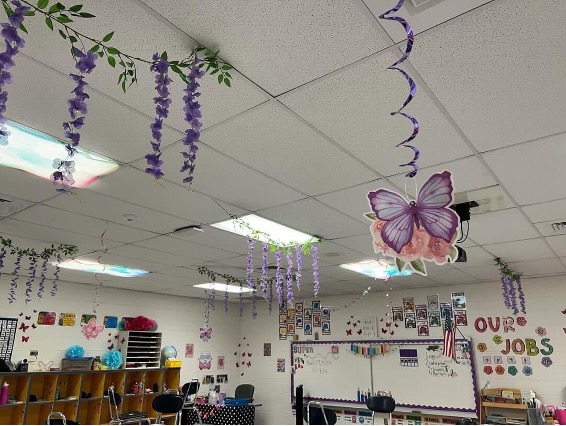Key points:
Teachers have their own preferences and approaches when it comes to classroom decor. But every teacher designs their classroom with the same goal in mind: to create an attractive and welcoming space for students.
However, decorating a classroom is not an easy task. It takes meticulous research and planning to choose how you will decorate, and with so many ideas available on social media it can be difficult to identify which one will best suit you and your students' teaching style. Perhaps the biggest challenge when decorating a classroom is cost: decor and other classroom supplies tend to add up very quickly.
But there are ways to create the classroom of your dreams without spending a lot of money. Whether you have an empty classroom that needs decorating or are looking to renovate your classroom, here are five inexpensive ways to decorate your classroom and create an engaging learning environment for your students.
1. Create a classroom theme
A classroom theme gives the room personality and ties the decor together. It can also inspire many themed lessons throughout the school year.
Working with a theme also makes it a little easier to identify which decor and supplies you need and which you don't. This can be critical to maintaining your budget because you can afford to only purchase items that are related to the topic.
A classroom topic also creates a lot of excitement among students because they are no longer entering a classroom, but rather going to a tropical island, diving into the depths of the sea, or launching into outer space; there are many possibilities. For example, I created a jungle-inspired classroom for my kindergarten students that transported them to Madagascar. The children loved it and were eager to enter the classroom to discover what “the jungle” had in store for them each day.
2. Introduce new elements into the classroom to align them with the lessons.
Students are always surprised when their classroom has something new and it keeps them engaged throughout the school year. This doesn't mean you need to do a complete classroom overhaul every few months. But introducing new decor here and there into the classroom that aligns with new lessons or holidays can be a fun surprise for students.
When we hatched butterflies in my kindergarten classroom, I hung wisteria vines and butterflies around our space. The visuals reinforced key learnings from our butterfly lessons and generated excitement around them.
These additional decorations can be expensive, especially when teachers have already decorated their entire classroom once. I found all my butterfly inspired decor at Temu to save money. You can look for discount stores and markets to decorate on a budget, or even choose to make new decorations for the classroom.

3. Display student work
Student work can be another great (and profitable) piece of classroom decor. When students see their work on the classroom walls, it instills in them a feeling of pride and accomplishment. The goal of displaying their work in the classroom can also motivate them to do their best work and increase their engagement.
Beyond boosting students' confidence, showing their work can improve their memory of the material. It also allows students to learn from each other, opening them up to different ideas and perspectives that they may not have initially thought of.
4. Consider the layout of the classroom.
The layout of a classroom is as important as what is on the walls. Arranging desks into clusters, horseshoes, combinations, and more to encourage collaboration among classmates can promote peer-to-peer discussion and learning. Introducing flexible seating options, such as reading couches or cozy nooks, can break up the day and restore students' attention and concentration.
It may also be beneficial to change the arrangement of desks for certain activities. For example, students would benefit more from group activities if their desks were close together in a group, while spaced desks are better for exams and other individual work. If students have assigned seats, consider moving them occasionally so they can interact with other students.
5. Set a goal in the classroom and display it for all students to see.
Whether it's a daily goal, a weekly challenge, or a long-term goal, having something students can strive for can keep them motivated in the classroom. Display the objective at the front of the class or in another prominent place to easily remind students what they are working on. In addition to the goal itself, a chart or checklist that allows students to see their progress will also motivate them to achieve the goal. All of this can be done yourself to keep costs down.
Teachers don't need to spend hundreds of dollars on their classrooms. With some creativity and DIY power, teachers can create the classrooms of their dreams that maximally engage their students.

!function(f,b,e,v,n,t,s)
{if(f.fbq)return;n=f.fbq=function(){n.callMethod?
n.callMethod.apply(n,arguments):n.queue.push(arguments)};
if(!f._fbq)f._fbq=n;n.push=n;n.loaded=!0;n.version=’2.0′;
n.queue=();t=b.createElement(e);t.async=!0;
t.src=v;s=b.getElementsByTagName(e)(0);
s.parentNode.insertBefore(t,s)}(window, document,’script’,
‘https://connect.facebook.net/en_US/fbevents.js’);
fbq(‘init’, ‘6079750752134785’);
fbq(‘track’, ‘PageView’);






